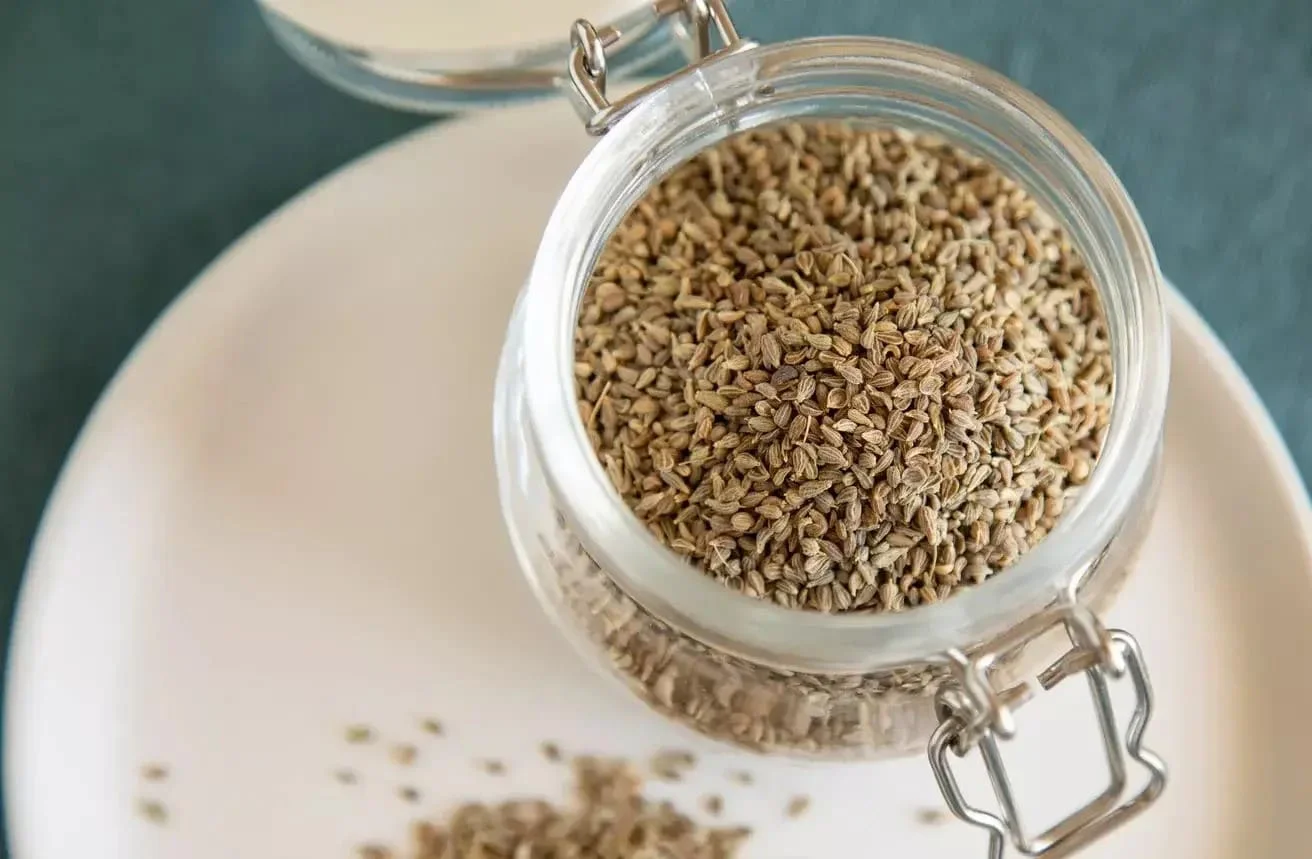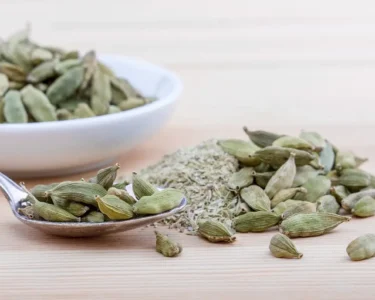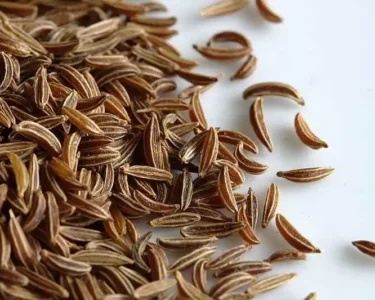Anise seed (Pimpinella anisum) is a spice birthed from the Mediterranean basin and Southwest Asia. It comes from a flowering plant of the family Apiaceae, also known as parsley family. They are small in size, closely resembling beans and are light brownish-gray in color. Furthermore, seeds possess a specific sweetish, soft, and warm-ears licorice flavor.
Anise seeds are employed in culinary and baking sectors. These are utilized in adding flavors to food like biscuits, cakes, breads and also in cookery foods like soups, stews, and other curry related foods. They are also added in drinks such as teas, cocktails or many other kinds of drinks.
What is the appearance of anise seed?
Anise seeds are small, about the size of pea, compressed and oval, and their color ranges from light brownish-grey. Here are some key visual characteristics of anise seeds:
- Size: Their sizes are relatively small, approximately 3mm to 5mm in length (0. 12 inches to 0. 2 inches).
- Shape: They are elongated and oval in outline, which remind of small balls or droplets, such as in a football.
- Color: The seeds vary and range from light to medium brown colour with slight greyish tinge.
- Texture: Anise seeds are small, roughly spherical in shape and have a smooth, outer surface when viewed in a mirror. The seeds are relatively rigid and have a denser texture when compressed.
- Aroma: They possess peculiar fragrances that are quite sweet and reminiscent of aniseed when the seeds are interrupted in some way.
The two seed forms of anise are aniseeds which are commonly used as spices particularly in cooking and baking and are well defined by their characteristic features and odour.
Anise Seed Herbal Tea
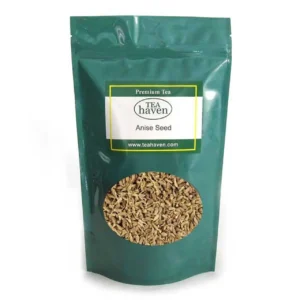

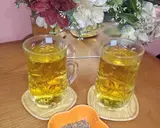

Tea made from the seeds of Pimpinella anisum is a herbal infusion made with anise seed, which is another name for pimpinella anisum. Here are some steps to follow in making it.
Ingredients:
- 1 teaspoon of anise seeds
- 1 cup of water
- Optional: Honey or sugar as you like
Instructions:
- Boil Water: Star the process by boiling one cup of water.
- Prepare Anise Seeds: Take 1 spoon of anise seeds and ground them into fine powder. This will help bringing out anise seeds aromatic oils and flavor.
- Soaking: Place the crushed anise seeds into a teapot.
- Pouring Water: Next step is pouring water over the crushed seeds.
- Steeping Time: Keep the teapot or mug closed and let the seeds seep in the hot water for about five to ten minutes long because the longer they seep, the stronger it tastes,.
- Strain: After steeping, strain tea into tea strainer to remove anise seeds.
- Sweeten (Optional): Add honey or sugar if necessary—though Anise seed tea is naturally mild—because sweetening flavors up;
- Serve: Your tea is ready to drink. Drink your tea while it’s still hot!
How to Grow Anise From Seed
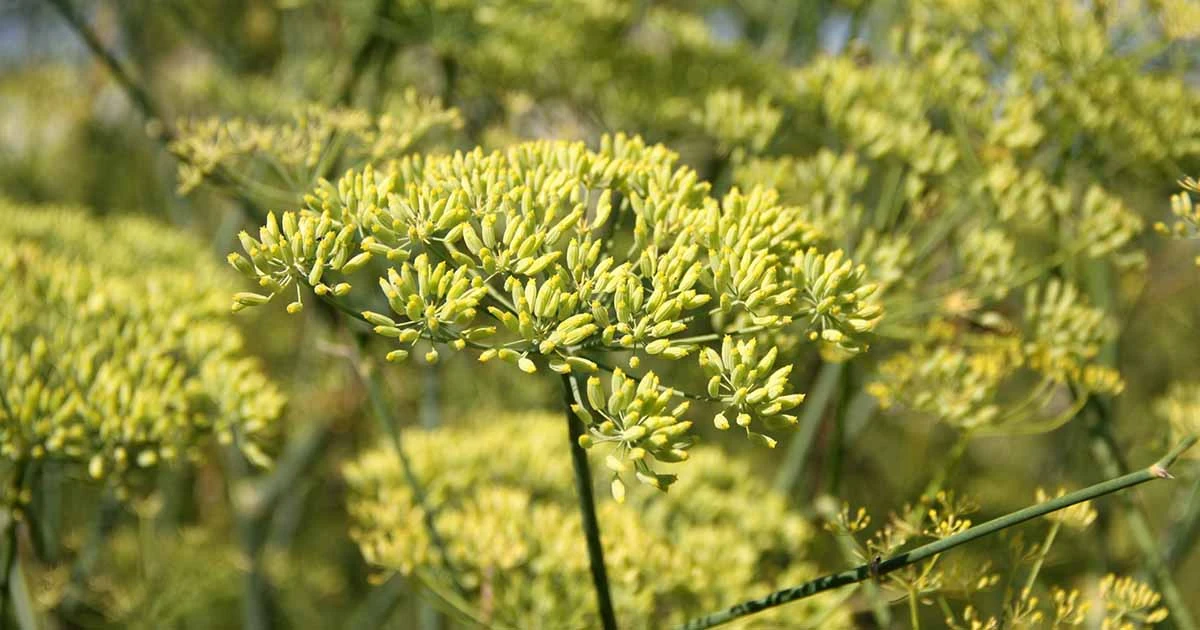

Planting anise can be enjoyable if some important aspects are considered fully. Here’s a guide on how to grow anise:
- Environment and Soil: Anise thrives in fully exposed areas, in a nutrient-rich soil. You have to make sure that soil provides good drainage and has a neutral to slightly acidic pH (6. 0 to 7. 0). It grows better in tropical regions, however, does well in regions with warmer climate, but can also withstand cooler ones.
- Planting:
- Anise seeds cannot be transplanted so the best plan is to sow them directly in the soil at the end of winter or early spring.
- Plant seeds at a very shallow depth, about one-quarter of an inch below the ground and have them spaced about 6-12 inches from each other.
- Watering: Water the soil frequently but not excessively and always ensures the seeds and seedlings are well watered.
- Maintenance:
- Thin them to ensure adequate spacing because it is important for the seedlings.
- Remove weeds frequently for minimizing competition
- Prune plants to encourage their growth and remove any withered stems and leaves.
- Harvesting: The anise plants take roughly 120 days to mature after planting. In ripened state, the seeds are often grey-brown and dry, it is time for harvest. Remove the seed head and dry it in a properly controlled environment inside the house.
- Storage: The whole seeds should be dried and put in air tight containers. They should be stored in a cool place. It is possible to keep them chilled for as long as a year to maintain their taste.
If you have done these steps, then you can be able to grow anise and use the aromatic seeds in any of your dishes.
Star Anise vs Anise Seeds
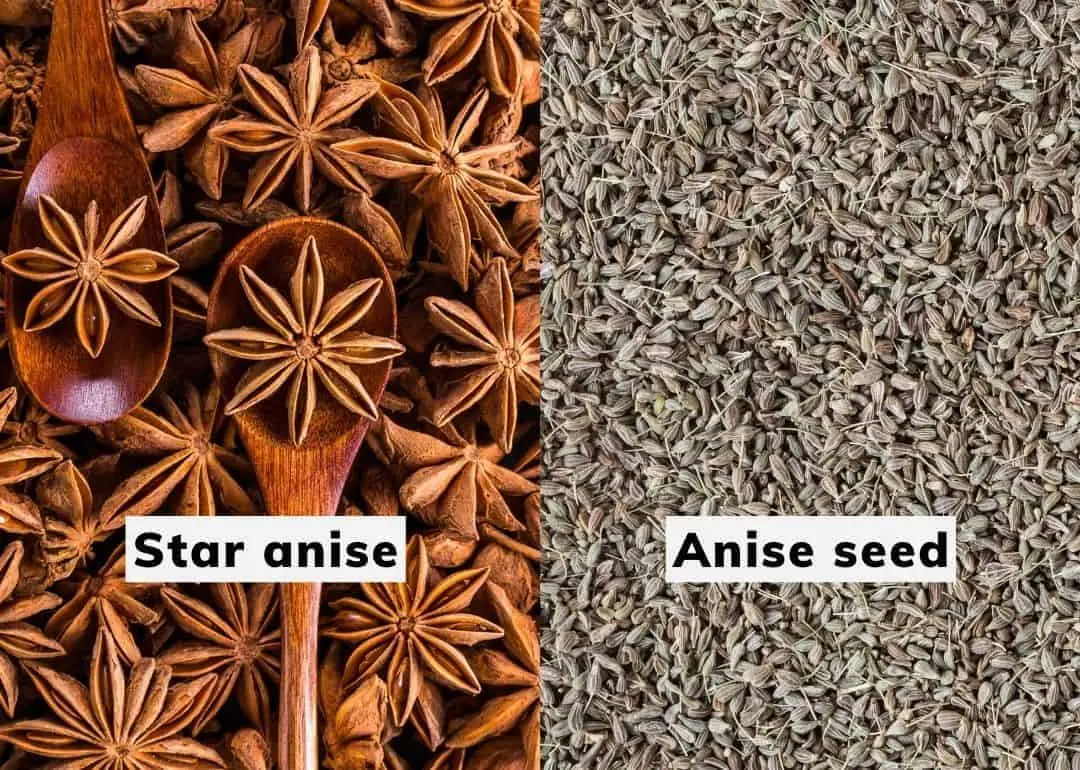

Anise seed and Star anise are two distinct spices that share a similar flavor profile but come from different plants and have some differences in their culinary uses and chemical composition:
Star Anise:
- Source: Illicium verum, the plant is an evergreen tree that grows of about two to four meters in height. It is native to Northeast Vietnam and South China.
- Appearance: It is star shaped with eight sides, each containing the seeds measuring the size of a pea.
- Flavor: Star anise are known for having a more potent flavor profile than anise seed, with a distinct licorice note.
- Culinary Usage: It is normally consumed whole or even grounded and these can be categorized under sweet and salt cuisines and the Asia, more specifically China and Vietnam.
It is an important component of the Chinese five spice powder, it applies to braise, soup and dessert.
Anise Seed:
- Source: Aniseed or anise seed comes from a flowering plant of the Parsley family and is native to the Eastern Mediterranean and Southwestern Asia.
- Appearance: They are small, elongated oval seeds, with a light brownish–gray color.
- Flavor: Anise seeds are smaller and have a sweeter and milder licorice tone as compared to star anise.
- Culinary Usage: They are widely employed in chocolates and baking product like cakes, breads and cookies. They are also regularly employed in sauces, casseroles, stews, soups and especially sausages. Anise seeds can be added to a dish as ground anise or whole berries with the seed still intact.
To sum up, star anise as well as anise seed have the similar but different note of licorice taste. They belong to different plants and have different roles in different cultures. Star anise is much more potent and usually employed in Asian recipes, anise seed, on the other hand, is milder and is used in baking and many recipes from the western world.
Anise Uses and Benefits
Anise is known for its flavor use in food preparations as well as being used in treating certain ailments.
Culinary usage:
- The anise seeds are mostly used to give the food a sweetish and slightly black licorice taste.
- They are a staple product in many of the basic cooked dishes.
- Traditionally, they are used in most baking processes as well as many of the basic sauces and boiling mixture such as cookies, cakes and bread, soups and stews and sausages among others.
- Anise seeds are also employed as a seasoning for liquids or soups like teas and spirits such as ouzo and anisette.
Health benefits:
- Digestive Health: Many digestive issues such as gas, bloating and gastric upsets are eased by the use of anise. Sometime it can act as antispasmodic agents aiding in the release of pressure within the gastrointestinal tract and removal of gas.
- Respiratory Support: The seeds were also believed to possess expectorant effects, therefore, are used frequently for coughs and in clearing congestion in the respiratory system.
- Antioxidant Properties: Anise contains various flavonoids and phenolic compounds that could enhance the functioning of antioxidants.
- Hormonal Balance: Anethole found in the seeds of anise has estrogenic effects, increasing the chances of regulating hormonal imbalances especially in females.
- Antimicrobial Effects: With regards to the antimicrobial effectiveness, anise seeds show effects on certain bacteria and fungi and for this reason, it was used in traditional medicine for infection treatments.
Anise Seed Cookies (Italian)


Anise Seeds Cookies are delicacies that started from the Italian baking sector. Here’s a simple recipe for these Italian-style cookies:
Ingredients:
- All-purpose flour equal to two cups
- 1/2 a teaspoon of baking powder.
- 1/4 teaspoon salt
- 1/2 cup unsalted butter (I used softened butter)
- ¼ cup of granulated sugar.
- 2 large eggs
- 1 laurel teaspoon vanilla.
- 1 tablespoon of anise seeds that should be lightly crushed
- Powdered sugar for dusting the biscuits (You can also use confectioner’s sugar)
Instructions:
- Preheat Oven: Now, stand your oven at 350°F (or 175°C if you are using a gas oven). Place baking sheets with parchment paper or silicone baking mats with enough space between the lines to allow the shortbread to spread out.
- Mix Dry Ingredients: To a bowl, add flour, baking powder, and salt and mix them well with a whisk. Set aside.
- Adding Anise Seeds: Stir in the lightly crushed anise seeds before it starts to brown slightly and loses its raw smell. (Use less if you want light anise flavor and use more if you want a strong taste of anise.)
- Cream Butter and Sugar: In a different bowl, beat the butter until smooth and fluffy, then add the granulated sugar.
- Add Eggs and Vanilla: Add eggs in the butter, one by one followed by the vanilla extract and ensuring it mixes well.
- Combining Wet and Dry Ingredients: Slowly, use the flour mixture and combine with the butter mixture until a cookie dough is formed. (The dough should be a little sticky, not too soft)
- Shaping the Cookies: Using tablespoon or cookie scoop, scoop balls of dough and drop them into the greased baking sheets leaving about 2 inches in between each dough.
- Bake: Place on the baking sheet and bake for 10-12 minutes on preheated 350 sq temperature until cookies are set and turning slightly golden brown around the edges.
- Cool: Transfer the cookies onto the baking sheets for a few minutes to firm up and then using a spatula, move them to wire racks to cool completely.
- Optional: Lastly, if you want to have an artistic look, you can powder the cookies with powdered sugar before consuming them.
Tips:
- Anise Flavor: You may add or reduce more seeds depending with the tastes which require either a strong anise flavor or a less stronger one.
- Storage: Can the cookies for the short term storage at room temperature. They can also be frozen for longer time storage.
- Variation: If you want to elevate it even further, you may want to add 1 tablespoon of lemon zest to the dough.
These Italian cookies are best eaten together with coffee or tea, and the anise identifies the pleasantly aromatic biscotti.
Conclusion:
In conclusion, anise is an awesome and easy to grow herb with many uses and benefits in our daily life. By following the above guide on how to grow anise from anise seed, you can add this beautiful herb in your garden.
Please comment, like and share our content. Also comment if you want us to write about any specific plant or herb. Thank you for reading!
FAQs
Is fennel seed the same as anise seeds?
No, fennel seeds and anise seeds are may look same but they are part of different plant species. Finely divided fennel seeds, known as Foeniculum vulgare, are larger and extra sweeter and are utilized in Mediterranean and Indian cooking. Anise seed are smaller, with a strong flavor and frequently utilized in the baking.
Is star anise same as anise seed?
No, star anise is not same as anise seed. Just like fennel seed, star anise and anise seed are part of different plant species and have different uses.


